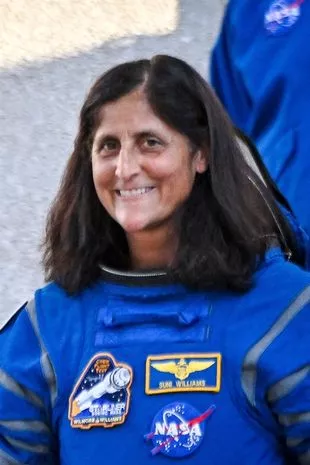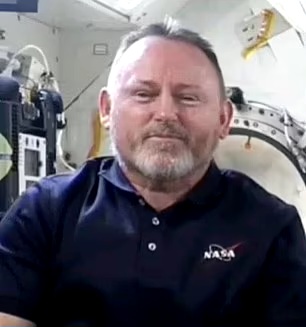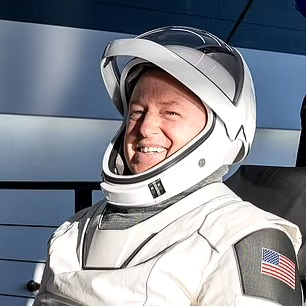Before-and-After Photos of Stranded Astronauts Show Effects of Months in Space
Side-by-side images of NASA astronauts Butch Wilmore and Suni Williams reveal striking facial changes after an incredible 286 days in space.
Following their long-awaited return to Earth, Wilmore and Williams now face an intense recovery process. Their SpaceX capsule splashed down in the Gulf of Mexico on Tuesday, March 18, just hours after departing the International Space Station.
Upon exiting the capsule, both astronauts were immediately transported for medical evaluations on stretchers.
In shocking NASA-released photos, they appeared gaunt, pale, and visibly aged, highlighting the toll that prolonged low-gravity exposure takes on the human body and the necessity of an extensive rehabilitation period.

Suni Williams Before

Suni Williams
Extended periods in space can have significant effects on the body, impacting both skin and vision, and in some cases, leading to blood clots. Astronauts are also subjected to high levels of radiation, as they are beyond Earth’s protective atmosphere and magnetic field, making them more vulnerable to harmful cosmic rays and solar particles.
The lack of gravity contributes to muscle atrophy due to limited movement, while bones lose density, leading to an increase in mineral content in the bloodstream.
Neurological effects such as disorientation, space motion sickness, and a diminished sense of direction are also common challenges astronauts face during and after prolonged space missions.

Butch Wilmore Before

Butch Wilmore in March 2025

Butch Wilmore now
Other risks associated with prolonged space travel include swelling in the back of the eye, reductions in blood volume, decreased orthostatic tolerance, and diminished aerobic capacity, along with an increased likelihood of arrhythmias, according to the Baylor College of Medicine.
Essentially, space presents an environment unsuitable for human physiology, and NASA continues to study its effects while working on solutions to mitigate the physical toll on astronauts.
Before their return to Earth, Wilmore and Williams completed 4,576 orbits and traveled an astonishing 121 million miles (195 million kilometers).
Despite their extended stay, both former Navy captains likened the experience to their time in military service and remained positive, though they acknowledged the strain it placed on their families. Wilmore missed much of his younger daughter’s senior year and his older daughter’s college life, while Williams relied on the internet to stay connected with her loved ones from space.
Originally set to be in space for just a week following their June 5 launch aboard Boeing’s new Starliner crew capsule, the pair faced multiple challenges during their mission.
Stranded longer than expected, they became valuable team members aboard the space station, contributing to scientific research, repairing equipment, and participating in spacewalks. Williams, in particular, set a record for the most time spent spacewalking by a female astronaut, accumulating 62 hours across nine spacewalks.
Their replacement crew’s arrival on Sunday, March 16, finally signaled their return. NASA allowed them to depart slightly earlier than planned due to concerns over unpredictable weather conditions later in the week.
You may be interested

FCT Police Spokesperson SP Josephine Adeh Honoured with Best Police PRO Award at 2025 Nigerian Police Awards
gisthub - Jun 05, 2025Superintendent of Police Josephine Adeh, the FCT Police Command’s Public Relations Officer, has clinched the prestigious title of Public Relations Officer of the…

Woman Whose Lip Was Severed by Ex-Boyfriend Shares Recovery Seven Years Later
gisthub - Jun 05, 2025Kayla Hayes’ story is a powerful example of resilience in the face of unimaginable violence. In 2017, at just 17, she was brutally…

Pornhub Ban Spreads Across Europe Over Under-18 Access Dispute
gisthub - Jun 05, 2025Pornhub’s bold exit from France is a striking clash between digital privacy and regulatory zeal—a flashpoint in the ongoing war to shield minors…














Leave a Comment